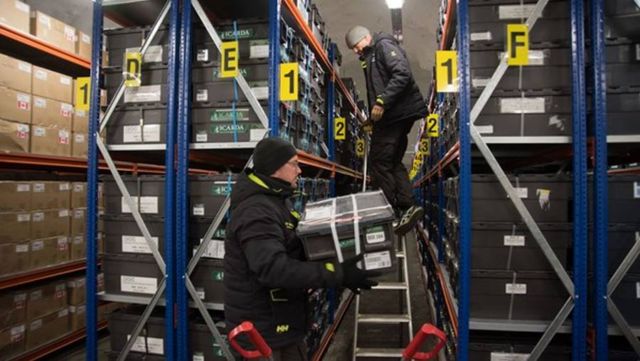

“The seed vault marks a historic turning point in safeguarding the world’s crop diversity,” says Fowler. It also protects against diminishing diversity. It will secure – for many centuries – seeds representing every important crop variety available today and could prove invaluable in restarting agricultural production in the wake of natural or man-made disasters. Cary Fowler, executive director of the trust, likens the vault to an insurance policy. The seeds are owned by the seed banks, but the vault is owned and financed by the Norwegian government, and its operations are financed by the Global Crop Diversity Trust. The vault receives deposits from seed banks all over the world. “The first package contained seeds originating from as many as 123 different countries.” Owned by the Norwegian government Rice is probably the world’s single most important food crop, and the variations are enormous,” says Ola Westengen, operation manager at Nordic Genetic Resource Centre, the organization responsible for the day-to-day operations of the vault. The package was carried in by Norwegian Prime Minister Jens Stoltenberg and Nobel Peace Price winner Wangri Maathai. The first deposit into the vault in February 2008 was a collection of rice seeds from the International Rice Research Institute. The frozen treasure is meant to be a bank of last resort, to provide backup should natural catastrophe, environmental damage or war deplete crop diversity. The millions and millions of seeds stored there range from unique varieties of major African and Asian food staples such as maize, rice, wheat and sorghum to European and North and South American varieties of eggplant, lettuce, barley and potatoes. The vault comprises swimming-pool-sized rooms carved into the frozen rock some 100 metres inside the mountain and accessible via a long tunnel. The seeds, boxes and boxes of them, are stored in the Svalbard Global Seed Vault, on the main island of Spitsbergen, near the world’s northernmost village, Longyearbyen. Yet underneath the ice, snow and darkness lies one of the world’s largest seed collections. Apart from glaciers and ice caps, little grows on Norway’s Svalbard islands, situated just south of the North Pole, and vegetation is sparse.


 0 kommentar(er)
0 kommentar(er)
